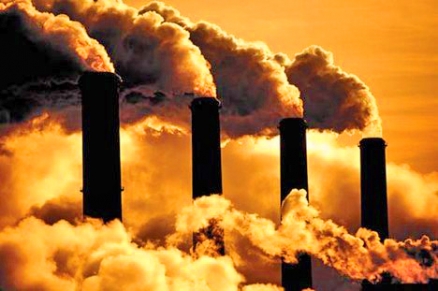Greenhouse Gases from Stationary Sources
Introduction
This article is a USA-centric treatment addressing actions of the U.S. Environmental Protection Agency in attempting to control greenhouse gases from stationary sources using Best Available Control Technology (BACT). Although the USA is already controlling air pollution emissions from stationary sources to a highly effective degree, the USA is examining more stringent methods of emissions control that can lead to reduced levels of carbon dioxide, methane, black carbon and other greenhouse gases.
Summary
Stationary sources—a term that includes power plants, petroleum refineries, manufacturing facilities, and other non-mobile sources of air pollution—are not subject to any greenhouse gas (GHG) emission standards issued by the EPA; but because the Clean Air Act clearly addresses only air pollutants; such stationary sources were targeted by EPA (without congressional authority) to become subject to permit requirements for their GHG emissions beginning on January 2, 2011. Affected units were subject to the permitting requirements of the Prevention of Significant Deterioration (PSD) and Title V provisions. For PSD, this will include state determinations of what constitutes Best Available Control Technology (BACT) that affected facilities will be required to install. On November 10, 2010, EPA released guidance and technical information to assist state authorities in issuing permits and determining BACT.
Among the sources likely to be affected by implementation of the PSD permit requirements are new and modified electric generating units of all kinds, but particularly those fired by coal. These sources emit substantially more than EPA’s threshold of 100,000 metric tons of [[carbon dioxide] (CO2)] annually: for example, a 500 megawatt (MW) coal-fired baseload power plant would emit on the order of three million metric tons of CO2 annually. The coal mining industry and coal-fired electric utilities face at least half a dozen major regulatory actions over the next few years; industry supporters view these rules collectively as a significant threat to the future of coal. Viewed in this context, the permit requirement is one more nail in what increasingly appears to them as coal’s future coffin.
In its new guidance, EPA retains the basic five-step process for determining BACT that it has recommended to state authorities for 20 years. The primary foci of the EPA guidance package are on state discretion in determining BACT and on energy efficiency as the most likely result of a GHG BACT analysis. These foci are evident through EPA’s guidance for each of the five steps.
For those looking for bright lines and specific recommendations with respect to GHG BACT technologies, particularly with respect to coal-fired facilities, the released package does not provide them. Indeed, EPA’s supplemental “Questions and Answers” release on the guidance seems to stress that it did not draw such conclusions. For example:
- Do these tools identify BACT for specific types of industrial facilities? No.
- Does this guidance say that fuel switching (coal to natural gas) should be selected as BACT for a power plant? No.
- Does this guidance say that carbon capture and storage (CCS) should be selected as BACT? No.
Likewise, the guidance provides no cost thresholds for permitting authorities to consider in determining the economic impacts of alternatives nor proposes a new approach to selecting BACT for GHG emissions. Instead, the guidance focuses on the discretionary authority that states have in determining BACT—discretion that ensures that BACT will continue to be determined on a case-by-case basis with states differing in what they consider appropriate control measures and what constitutes BACT. Whether industry will find such discretion provides sufficient regulatory certainty to invest billions in new plants remains to be seen.
In short, the EPA GHG guidance is a simple expansion of the five-step BACT process that has been used for two decades to include greenhouse gases. Whether that is an adequate response will be determined by applicants, state authorities, and future EPA regulatory actions under related parts of the act, such as Section 111 (NSPS), to which BACT is linked.
Editor's Note
This summary was taken from the Congressional Research Service Report R41505 by Larry Parker and James E. McCarthy
